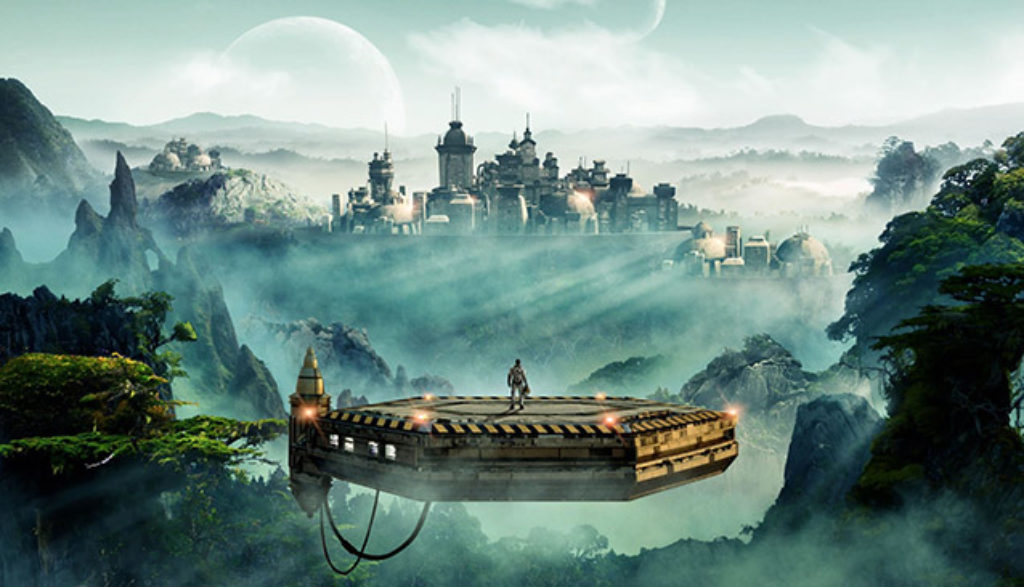
Mankind has really messed things up this time. Was it war, global warming, overcrowding or some debilitating disease? Clues suggest it was some combination of all of those things.
But the past is the past! Now it’s time to smarten up, single out those souls who are truly the best of the best and, well, escape a failed civilization in search of new planetary living arrangements. It’s time for Sid Meier’s latest adventure, Civilization: Beyond Earth.
A Study in Civs: Yesterday and Tomorrow
Over the last two decades of the Civilization game series there have been five major editions, along with dozens of expansion packs and periphery versions. But, frankly, even the benchmark sequels were essentially graphical upgrades or conceptual fine-tunings of the original 1991 game. You took your settlers out into the wilderness to explore, exterminate, expand, exploit and build a flat-out excellent civ that could lead mankind toward tomorrow.
Now it finally is tomorrow. Beyond Earth is, at its core, the same concept with a new skin, but it really does feel like an entirely new game. In the previous versions, one of the winning scenarios was to advance your people’s scientific knowledge to the point at which they could launch a space mission to Alpha Centauri. So, in a way, this game is the continuation of that dream.
Yep, you’re still planting your flag (for, say, the American Reclamation Corp. or Pan-Asian Cooperative). And you’re still trying to flourish through research, population growth, city building and trade with others. But everything’s been given a huge sci-fi twist and reframed as interstellar colonization. The world around you is foreign and pocked with gigantic craterous canyons and patches of foul noxious gas. And the old standard player approaches don’t always apply.
ETs as Big as Your Block
There are no early-age barbarians to contend with here, for instance. Instead, there are (relatively) aggressive indigenous alien species—ranging from groups of roachmen-looking creatures to giant Dune-like worms to seagoing Kraken as large as small cities. But do you blast them, try to domesticate them or attempt to communicate with them? Your approach can make a galaxy of difference.
Quests are a big part of this new version, too. Some lead you in a progressive, narrative storyline; some are tutorials; and some can really help you move your people forward. The old game’s historical context is totally displaced, of course. The 500 years you play through, now, are in a distant future. And, frankly, that can make things a little confusing.
The old game had you trekking through the ages researching beneficial and linear improvements such as “Agriculture,” “Mining,” “Steam Power” and “Gun Powder.” That makes total sense to all us earthlings, knowing our own history like we do. But a nondirectional web of tech improvements like “Alien Sciences,” “Bionics” and “Transcendental Math” gives very few clues as to how well we’re doing, whether we’re progressing or regressing. It all sounds sci-fi cool, but between launching solar satellites and crafting mind-reading machines, it can make the progress to victory difficult without a lot of extra reading in the game’s internal Civilopedia.
An Out-of-This-World Balancing Act
All of the civs, including your own, will reach for planetary domination through a number of standard human means. And that means some might shoot for the old-school “big stick” approach. And that will let loose missiles, tanks, satellite lasers and all manner of future-tech soldiers. (There’s no blood or gore as the bird’s-eye view lets us see characters tumble over and disappear.)
There are other ways to be aggressive, too. Internal subterfuge is always present, and gamers can use spies to undermine a government, plant dirty bombs in a civ’s capital, and steal everything from secrets and money to, well, whole cities if the right combination of situations arise.
There are three different human “Affinities” in this game. There’s one (Purity) that sticks by old-Earth priorities, one that grabs for whatever hybrid tech it needs to succeed (Supremacy), and a third (Harmony) that focuses on connecting with the new world and creating a new-agey type of undescribed “religion.”
Victories, then, can range from motivating the people to be united in “planetary nirvana,” all the way to sending a large number of militarily advanced “peacekeeping” troops back to Earth to conquer (emancipate) its populace.
By the time you reach the point at which you proudly wave your colorful flag or meekly hold up the white rag of defeat, though, you’ll definitely see the old Civilization pedigree come shining through. The world-building choices are multitude, the strategy challenges are stellar and the game’s impact crater pitfalls are … quite navigable, especially when compared to so many other video game spacefaring journeys.

After spending more than two decades touring, directing, writing and producing for Christian theater and radio (most recently for Adventures in Odyssey, which he still contributes to), Bob joined the Plugged In staff to help us focus more heavily on video games. He is also one of our primary movie reviewers.